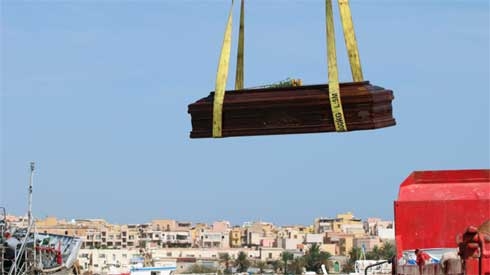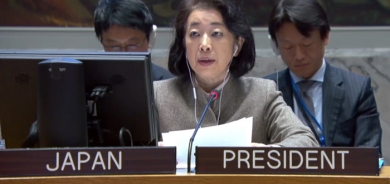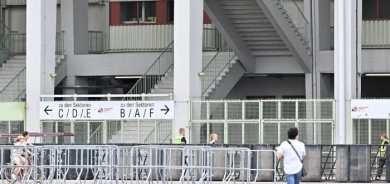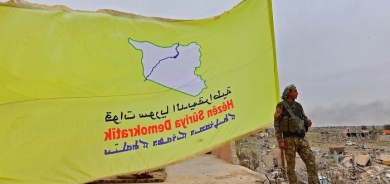AP finds almost 4,900 migrants headed to Europe go missing

Everyone needed to chip in to pay for the boat, gas and supplies, and he was short about $100. So he sat inside and watched as they left for the beachside campsite where even today locals spend the night before embarking north.
Propelled by a feeble outboard motor and overburdened, the rubber raft flipped, possibly after grazing rocks just offshore. The lone survivor was found clinging to debris eight hours later. Two bodies were retrieved, and 11 young men are missing.
As global migration has soared to record highs, far less visible has been its toll: The tens of thousands of people who die or simply disappear during their journeys, never to be seen again. A growing number of migrants have drowned, died in deserts or fallen prey to traffickers, leaving their families to wonder what on earth happened to them. At the same time, anonymous bodies are filling cemeteries around the world.
In most cases, nobody is keeping track: Barely counted in life, these people don't register in death, as if they never lived at all.
An Associated Press tally has documented at least 56,800 migrants dead or missing worldwide since 2014 — almost double the number found in the world's only official attempt to try to count them, by the U.N.'s International Organization for Migration. The IOM toll as of Oct. 1 was more than 28,500.
The IOM's research was prompted by two shipwrecks and the deaths of at least 368 people off the coast of Italy in October 2013. It has focused mostly on fatalities in the Mediterranean, although its researchers plead for more data from elsewhere in the world. This year alone, the IOM has found more than 1,900 deaths in the waters that divide Africa and Europe, and more than 17,000 since 2014.
But even there, many of those who go missing are uncounted, including boatfuls of young Tunisians or Algerians and children whose parents lost track of them in the chaos of land border crossings. In all, The Associated Press found nearly 4,900 people whose families say they simply disappeared without a trace in Europe or en route, including more than 2,700 children whose families reported them missing to the Red Cross.
Of the world's migration crises, Europe's has been the most cruelly visible, with death playing out in videos and photographs. Images of the lifeless body of a Kurdish toddler on a beach, frozen tent camps in Eastern Europe, and a nearly numbing succession of deadly shipwrecks have been transmitted around the world, adding to the furor around migration.
In the Mediterranean, scores of tankers, cargo boats, cruise ships and military vessels tower over tiny, overcrowded rafts powered by an outboard motor for a one-way trip. Some larger wooden boats carry scores, even hundreds of migrants, but even they may go down when soft breezes turn into battering winds and thrashing waves further from shore.
But as the political tide in Europe turns against migrants, alive or dead, money is drying up for projects to track migration data and its costs. For example, when more than 800 people died in an April 2015 shipwreck off the coast of Italy, Europe's deadliest migrant sea disaster, Italian investigators pledged to identify them and find their families. More than three years later, under a new populist government, funding for this work has been cut off.
In the case of Arfaoui's friends, Tunisia's government has no official tally of the missing, and the group never made it close enough to Europe to catch the attention of authorities there. So these migrants never have been counted among the dead and missing.
"If I had gone with them, I'd be lost like the others," Arfaoui said recently, standing on the rocky shoreline with a group of friends, all of whom vaguely planned to leave for Europe. "If I get the chance, I'll do it. Even if I fear the sea and I know I might die, I'll do it."
With him that day was 30-year-old Mounir Aguida, who had already made the trip once, drifting for 19 hours after the boat engine cut out. In late August this year, he crammed into another raft with seven friends, feeling the waves slam the flimsy bow. At the last minute he and another young man jumped out.
"It didn't feel right," Aguida said.
There has been no word from the other six — yet another group of Ras Jebel's youth lost to the sea. With no shipwreck reported, no survivors to rescue and no bodies to identify, the six young men are not counted in any toll.
In addition to watching its own youth flee, Tunisia and to a lesser degree neighboring Algeria are transit points for other Africans north bound for Europe. Tunisia has its own cemetery for unidentified migrants, as do Greece, Italy and Turkey. On Tunisia's southern coast, one is tended by an unemployed sailor named Chamseddin Marzouk.
Of around 400 bodies interred in the coastal graveyard since it opened in 2005, only one has ever been identified. As for the others who lie beneath mounds of dirt, Marzouk couldn't imagine how their families would ever learn their fate.
"Their families may think that the person is still alive, or that he'll return one day to visit," Marzouk said. "They don't know that those they await are buried here, in Zarzis, Tunisia."
AP














